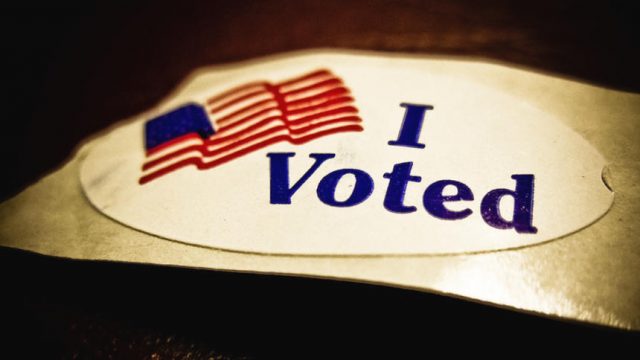Here Are the Measures Which Will Be on North Dakota’s Statewide Ballot in November

The deadlines have passed, the signatures have been submitted and verified, and the Secretary of State’s office announced today which measures will be on the ballot come November.
And while I’ve lost my appetite for legislating at the ballot box over the last several cycles, for those of us who make a living writing about politics it’s a good thing we have ballot measures this cycle. The Democrats have failed to put any candidates with a chance of winning on the statewide ballot, and the Libertarians seem incapable of getting much traction to fill that vacuum.
You can read the press release from the Secretary of State’s office below which announces the measures qualified for the ballot and their numbering.
An excerpt:

You’ve no doubt already heard a lot about measure 3 – 5.
Measure 3 is Marsy’s Law which seeks to enshrine rights for alleged victims in the state constitution (at the expense of the rights of the accused, unfortunately).
Measure 4 is a roughly 400 percent tax hike on cigarettes which also lumps vaping into the legal definition of a tobacco product.
Measure 5 is an extremely bureaucratic legalization of medical marijuana.
The first two measures are the ones you probably haven’t heard a lot about.
Measure 1 would require that lawmakers reside in their districts for the entirety of their terms in office. It originated with SCR4010 in the 2015 legislature (all constitutional amendments passed by the Legislature have to be approved on the statewide ballot) which makes these changes to the state constitution:

The last sentence is the big change. Under current law someone running for the Legislature has only to live in their district for 30 days prior to election day to be a qualified elector, and can actually move out of their legislative district the day after their election and live wherever they like for their entire four-year term. And some have. Notably Democratic Assistant Minority Leader Corey Mock, a state Representative, has lived outside of District 42 for years. In 2014 his wife – a person he presumably lives with – was even elected to local office from a ward outside of his legislative district.
Mock is now running for the state House in District 17, hoping to replace Rep. Eliot Glassheim who retired because of health reasons but is currently serving as a filler candidate for Democrats in the U.S. Senate race.
Anyway, I like the amendment, but my only worry is something like a natural disaster which might force a lawmaker to live outside of their district for an extended period of time. I know the flood here in Minot displaced a couple of lawmakers. I certainly don’t see that sort of thing as grounds for removal from office.
Measure 2 is a bit in the weeds. It originated with SCR4003 and allows the Legislature to divert some dollars which would be committed to the Foundation Aid Stabilization Fund (which backstops school funding). Here’s the thrust of the law change:

There were some complaints, back when the state had tidal waves of oil-driven revenues flowing into state coffers, that there wasn’t enough flexibility for lawmakers to use those revenues to meet immediate needs. Essentially this amendment allows lawmakers to use excess revenues dedicated to the Foundation Aid fund for education-related purposes, with “excess” defined as revenues above 15 percent of the last biennial appropriation to the school districts.
Seems reasonable to me. If anything, I think we need more of this sort of funds. I know it seems conservative to lock away tax revenues into these rainy day funds, but it makes the state’s revenue streams rigid. Better to let lawmakers access more of these revenues, lest immediate need and revenue restrictions lead policymakers to find revenues elsewhere. Perhaps in higher taxes.
[scribd id=321034187 key=key-kcurN6TFayO3fC2eNLJN mode=scroll]




